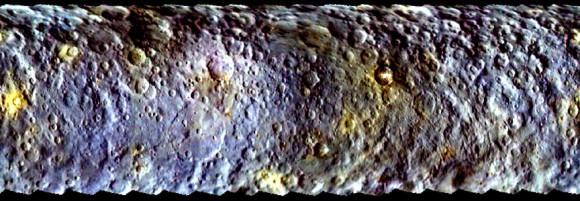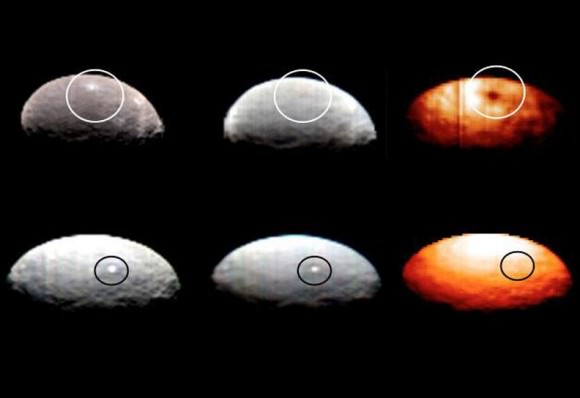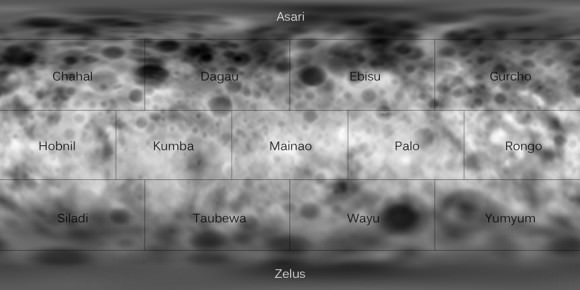Brand new images taken on April 10 by NASA’s Dawn probe show the dwarf planet from high above its north pole. Photographed at a distance of just 21,000 miles (33,000 km) — less than 1/10 the Earth-moon distance — they’re our sharpest views to date. The crispness combined with the low-angled sunlight gives Ceres a stark, lunar-like appearance.

Images will only get better. Dawn arrived at Ceres on March 6 and immediately got to work using its ion thrusters in conjunction with the dwarf planet’s gravity to gradually lower itself into a circular orbit. Once the spacecraft settles into its first science orbit on April 23 at a distance of 8,400 miles from the surface, it will begin taking a hard look at this cratered mini-planet. A little more than two weeks later, the probe will spiral down for an even closer view on May 9.

Dawn’s gravity spiral continues throughout the summer and fall until the probe tiptoes down to just 233 miles (375 km) altitude in late November. From there it will deploy its Gamma Ray and Neutron Detector (GRaND) to map the elements composing Ceres’ surface rocks. We’re in for a great ride!
Simulated Ceres rotation by Tom Ruen using the new color map
Meanwhile, scientists have assembled images taken by Dawn through blue, green and infrared filters to create a new color-enhanced map of the dwarf planet. The variety of landforms in conjunction with the color variations hint that Ceres was once an active body or one with the means to resurface itself from within. Mechanisms might involve internal heating and / or movement of water or ice.

There are still no new close-ups of the pair of enigmatic white spots taunting us from inside that 57-mile-wide crater. But there is a bit of news. Dawn’s visible and infrared mapping spectrometer or VIR has already examined Ceres in visible and infrared or thermal light. Data from VIR indicate that light and darker regions on the dwarf planet have different properties.

The bright spots are located in a region with a temperature similar to its surroundings. However, a different bright feature appears in a region that’s cooler than the neighboring surface. Exactly what those variations are telling us will hopefully become clear once Dawn returns more detailed images:
“The bright spots continue to fascinate the science team, but we will have to wait until we get closer and are able to resolve them before we can determine their source,” said Chris Russell, principal investigator for the Dawn mission.


Thanks Bob…
Finally, Dawn (and we) is getting closer to the white spots…!
Hi Gozlemci,
Yes, just a couple weeks!